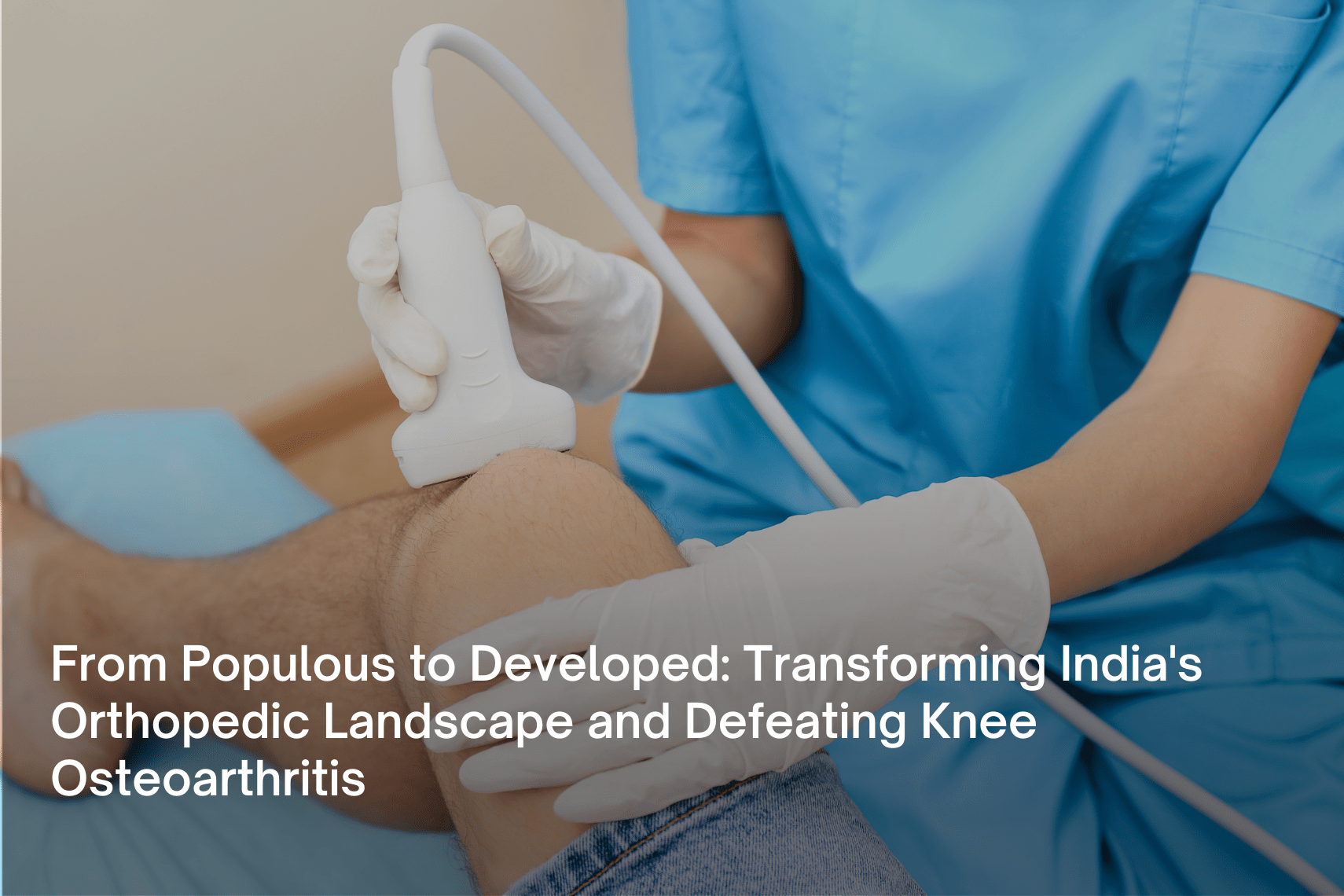
With a population exceeding 1.4 billion, India has officially claimed the title of the world’s most populous country. This significant milestone brings forth both potential and daunting responsibilities. However, amidst India’s preparations for an economic boom, there is a growing concern for present and aspiring physiotherapists and orthopedics who face a volumetric nightmare. The nation’s citizens are succumbing to an alarming surge in injuries, particularly knee osteoarthritis (OA). In this article, we delve into the challenges faced by healthcare professionals in addressing this pressing issue, and the implications it holds for the future of orthopedic care in India.
In a 30-year comparative study published by the Global Burden of Diseases, Injuries, and Risk Factors Study (GBDIRFS) on Indian OA epidemiology in 2019, India’s OA trajectory seems to be plunging downward. Around 23.65 million Indians suffered from OA in 1990, which spiked a whooping 166% to 62.35 million in 2019! Adjusting the population growth, the percentage increase still stood at a worrisome 8.5% per 100,000 people. While this data takes into account all kinds of OA (hip, knee, hand, etc), knee OA comprises 80% of all OA cases, meaning these stats are almost identical for knee OA.
To combat this massive unwanted rise in injuries, we need to understand its predictors to ensure timely prevention. On observing the data closely, certain variables seemed to play a more influential role in predicting knee OA – automobile accidents, age, metabolism and obesity, occupation and surprisingly, gender and race. Some of these predictors seem obvious. For example, greater the person’s age, lower its bone density and mass and lower joint strength. With regards to metabolism and occupation, overweight people with low metabolism and those with physically demanding occupations are prone to knee OA.
However, knee osteoarthritis (OA) exhibits interesting variations when it comes to factors such as gender and race. Specifically, women tend to experience the onset and severity of knee OA earlier and more severely than men. This phenomenon can be attributed to the natural loss of bone density that occurs earlier in women, negatively impacting their joint health. On the other hand, individuals of Indian origin can find solace in the fact that there is no significant research linking their racial and ethnic background to a higher vulnerability to knee OA. Instead, studies have primarily focused on the susceptibility of African-Americans, particularly females, to this condition. In this article, we explore the intriguing nuances of knee OA in relation to gender and race, shedding light on how these factors play a role in the development and progression of this prevalent joint disorder.
While the major factors of gender, race, muscle strength, genetics, and limb length inequality play significant roles in knee osteoarthritis (OA), there are several minor yet notable factors to consider as well. These include aspects like lifestyle choices, body weight, occupational hazards, and previous joint injuries. With a comprehensive understanding of these variables, the next crucial question arises: What can be done to prevent knee OA?
Just like most people undertake timely health checkups like blood tests, they must also include joint health reports to monitor their full body function. Ignoring joint health accelerates the worsening of a damaged knee and instead of a quick recovery, you may spiral into a slow, painful rehabilitation. Using AI-based equipment like Fitknees, patients can have a quantified insight of their knee performance and objectively compare their reports to address any anomalies that they may have overlooked. Maintaining a balanced diet and routinely exercising also contributes to a healthy knee.
Rising concerns of OA is not characteristic to just India. However, if India wants to elevate herself from the most populous country to the most developed country, she must make sure her citizens are healthy and while OA cases will continue to occur, understanding its epidemiology and acting accordingly will alleviate a lot of mental and physical stress. The way forward to tackling OA includes a combination of innovation and alertness – a future where responsibility and technology take care of one’s health.
